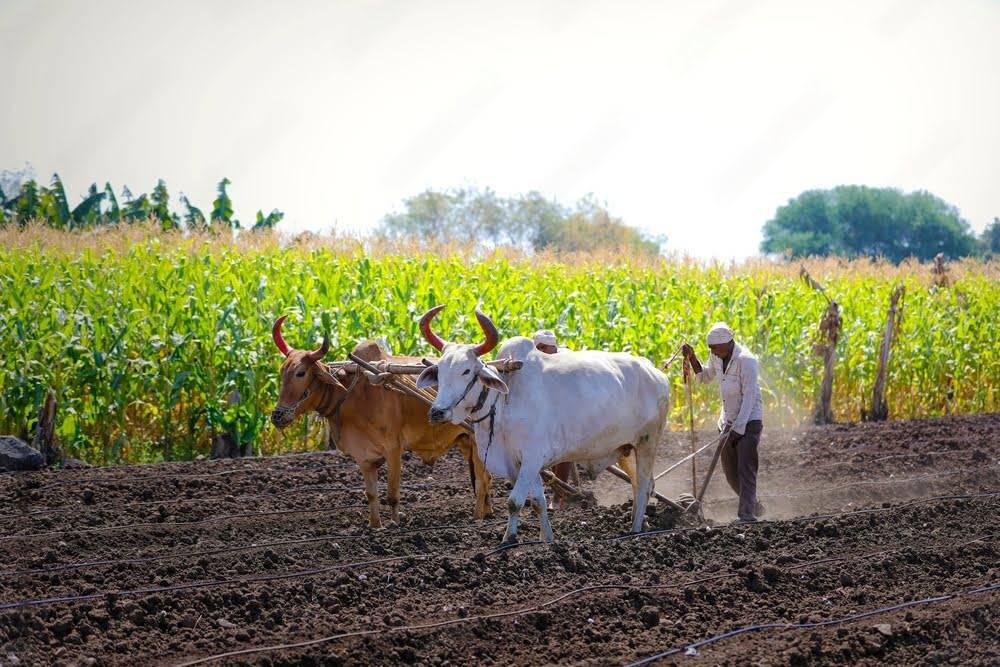Economic Policy Changes in India
Economic Policy Changes in India
India’s economic landscape transformed since 1991 with liberalization, privatization, and globalization. Key policies like the New Industrial Policy (1991), National Manufacturing Policy (2011), and ‘Make in India’ (2014) spurred rapid development. Foreign trade, investment, fiscal, and monetary policies also embraced liberalization. In agriculture, impactful policies like the New Agricultural Policy (2000), Rashtriya Krishi Vikas Yojana (2007), and National Food Security Mission (2007-08) were introduced. Stay updated for informed decisions in India’s evolving economic scenario.”
Read More: Economic Reforms in India

Economic Policy Changes in the Industrial Sector
Economic Policy Changes in the Industrial Sector
The government has embraced diverse economic policies to catalyze rapid development in the industrial sector. Policies about the industrial framework, foreign trade, fiscal matters, monetary strategies, and foreign investment have undergone liberalization. Key initiatives include the introduction of the New Manufacturing Policy in 2011 and the ‘Make in India Programme’ announced in 2014. The ensuing discussion delves into the details of these transformative economic policy changes.
Economic Policy Changes in the Industrial Sector
1. New Industrial Policy of 1991
Economic Policy Changes in the Industrial Sector
India’s new industrial policy was announced on July 24, 1991. This policy promoted privatization and deregulation by reducing controls. The following are the main features of the new industrial policy.
- Contraction of Public Sector: The policy reduces the public sector’s role, limiting reserved industries to nuclear energy and rail transport. Struggling units will be closed, and disinvestment will occur, with the National Renewal Fund established to protect affected workers.
- Privatization or Expansion of Private Sector: Unlike past focus on the public sector, the new policy promotes both public and private sectors. Private sector expansion includes opening new industries like software, hardware, energy, and biotechnology to private investment, encouraging collaborations for increased efficiency.
- Deregulation of License and Registration: Transitioning to a free economy, licensing requirements are eliminated for most industries, except for liquor, cigarettes, defense equipment, explosives, and hazardous chemicals. Industries now operate without prior government permission, aligning strategies with market demands.
- Relaxation from Monopolies Act: Significant changes to the Monopoly and Restrictive Trade Practices (MRTP) Act grant greater freedom to companies with assets exceeding ₹100 crore. The abolition of investment limits empowers larger companies to explore mergers, acquisitions, and ventures without unnecessary constraints.
- Foreign Direct Investment (FDI): The policy encourages FDI by increasing the limit to 100 percent in various sectors, aligning facilities with domestic investments. The Foreign Exchange Management Act (FEMA) in 1999 replaces the Foreign Exchange Regulation Act (FERA), reflecting a more liberal stance towards foreign investments. Many sectors now allow 100 percent FDI in equity capital.
- Foreign Technology Agreements: Acknowledging the role of advanced technology, the policy allows industries to enter technical agreements without prior government permission, empowering Indian industries with access to cutting-edge foreign technology.
Read More: Economic Planning in India
Economic Policy Changes in the Industrial Sector
2. Foreign Trade Policy
The Foreign Trade Policy aimed to expand markets by liberating foreign trade from restrictions. Notable measures include:
- Long-term policies are announced for various periods.
- Gradual reduction of customs duties to align with international standards.
- Initiatives to boost India’s share in global trade.
3. Fiscal Policy Reforms
Fiscal policy, governing government income and expenditure, underwent significant changes:
- Reduction in non-tax rates to discourage tax evasion.
- Cutting non-developmental expenditure for budgetary efficiency.
- Rationalizing subsidies to streamline government spending.
- Minimizing the portfolio on foreign debt.
- Introducing corrective changes in the electronic tax system.
Economic Policy Changes in the Industrial Sector
4. Monetary Policy Overhaul
The Reserve Bank, as the custodian of monetary policy, implemented measures to:
- Adjust cash reserve and statutory liquidity ratios for ample credit surplus.
- Reduce interest rates to promote economic stability.
- Curb non-productive loans to enhance funds for productive ventures.
- Allow banks to determine interest rates within specified limits for commercial efficiency.
Read More: Monetary Policy of India
Economic Policy Changes in the Industrial Sector
5. Foreign Investment Policy
The Foreign Capital Policy of 1991 aimed to liberalize and attract foreign investment:
- Abolishing restrictions on foreign capital inflow.
- Expanding foreign stock market participation to 100%.
- Simplifying procedures with automatic approval for investments and collaborations.
- Granting foreign investors more freedom in choosing enterprises.
- Introducing schemes and incentives to make foreign investment more practical.
6. National Manufacturing Policy, 2011
Envisioned for the next decade, this policy sought to elevate the manufacturing sector’s contribution to the GDP to 25%. Key features include:
- Focus on resolving sector-specific challenges.
- Aiming to generate 100 million additional jobs.
- Recognizing the crucial role of the manufacturing sector in economic development.
- Identifying areas for improvement to harness the sector’s full potential.
As the Indian economy continues to evolve, National Manufacturing policies form the cornerstone of its progress, fostering sustainable and inclusive economic growth.

Economic Policy Changes in the Industrial Sector
7. Make in India Program
The Make in India Program, initiated by the government in August 2014, stands as a cornerstone to fortify India’s manufacturing sector. The primary objective is to position India as a global manufacturing hub. Under the leadership of Prime Minister Narendra Modi, a clarion call has been extended to nations worldwide to establish manufacturing units in India. The program envisages several strategic initiatives to propel the manufacturing sector’s development
- Protection of Research and Innovation Rights: Emphasis will be placed on safeguarding the intellectual property rights of research and innovation, fostering a culture of invention.
- Strengthening Industrial Infrastructure: Significant investments will be directed towards enhancing industrial infrastructure, ensuring a robust foundation for manufacturing activities.
- Favorable Business Environment: Creating a conducive business environment through policy measures and incentives to attract international investments.
These measures are designed to allure global entities to set up manufacturing units in India, leading to enhanced foreign investment, bolstering the domestic economy, creating ample employment opportunities, and fostering collaboration between Indian and global production units. The competitive advantage lies in India’s cost-effective labor and expansive market access.
Objectives of the Make in India Programme
- Growth Rate Boost: Aiming for an annual growth rate of 12 to 14 percent in the Indian manufacturing sector.
- Increased GDP Contribution: Elevating the contribution of Indian manufacturing to at least 25 percent of the GDP by 2022.
- Job Creation: Generating an additional 100 million employment opportunities in the manufacturing sector by the end of 2022.
- Global Competitiveness: Enhancing the global competitiveness of the Indian manufacturing sector through technological advancements.
- Technological Improvements: Implementing technological advancements to further elevate the manufacturing capabilities in India.
- Skill Development: Special focus on improving the technical and managerial skills of the workforce.
- Sustainable Development: Ensuring long-term development aligned with environmental protection goals.
The Make in India Program is not just an economic strategy; it’s a comprehensive approach to drive sustainable, inclusive, and environmentally conscious economic growth.

Economic Policy Changes in the Agriculture Sector
Economic Policy Changes in the Agriculture Sector
The primary focus of India’s agricultural policy was attaining self-sufficiency in food grains. However, with the advent of liberalization, the agricultural policy underwent a paradigm shift, encompassing additional objectives. Beyond the imperative of ensuring food grain self-sufficiency, there emerged a recognition of the burgeoning significance of agricultural exports and agro-based industries. The post-liberalization era sought to accelerate development not only in the realm of food grains but also in diverse agricultural sectors.
Economic Policy Changes in the Agriculture Sector
1. New Agriculture Policy, 2000
- Rainbow Revolution: The new agricultural policy envisions a holistic transformation dubbed the Rainbow Revolution, encompassing the Green Revolution, the White Revolution (related to milk and its products), and the Blue Revolution (centered on fish farming).
- Promoting Agri-Exports: A key focus of the new agricultural policy is the promotion of exports, particularly of fruits, flowers, vegetables, and other agricultural products.
- Improving Agriculture Marketing: The policy emphasizes the enhancement of agricultural product marketing, with a primary focus on processing, including food processing, marketing, storage, and transportation.
- Crop Insurance: Significant emphasis is placed on the crop insurance scheme within this policy, aiming to safeguard farmers from natural and other uncertainties. The National Agricultural Insurance Scheme has been initiated to fulfill this purpose.
- Modern Agricultural Techniques: The new policy underscores the importance of adopting various modern techniques for agricultural production, with a specific focus on research and the adoption of innovative methods.
- Institutional Reforms: Institutional reforms hold a central position in the new policy, aiming to eliminate intermediaries, provide agricultural land directly to cultivating farmers, optimize farm sizes, ensure equitable land distribution, protect farmers’ interests, and promote cooperatives.
- Multiple Cropping: Shifting from traditional single-crop farming, the policy encourages the establishment of multiple crop fields, placing special importance on their development. This approach enhances land utilization and productivity.
- Strengthening Rural Infrastructure: A critical facet of the new policy involves the enhancement of rural infrastructure, including the strengthening of road construction, rural electrification, water supply, and telecommunication. This strategic focus is anticipated to contribute significantly to agricultural improvement.
- High-Yielding Variety Seeds: To boost agricultural productivity, the new agricultural policy accentuates the importance of utilizing high-quality seeds known for their high-yielding characteristics.
Economic Policy Changes in the Agriculture Sector
2. Rashtriya Krishi Vikas Yojana-RKVY
The Rashtriya Krishi Vikas Yojana, launched in August 2007, played a pivotal role in achieving an annual growth rate of 3.7 percent in the agriculture sector during the Eleventh Plan and 2.8 percent in the Twelfth Plan. This scheme significantly contributed to an annual increase of 3.3 percent in agricultural production in the years 2019-20 and 2020-21. The primary components of this transformative initiative include:
- Integrated Development of Major Food Crops: Focuses on cultivating high-quality seeds to boost the production of essential food grains like wheat, paddy, coarse grains, pulses, and oilseeds. Farmers receive training to enhance agricultural productivity.
- Agricultural Mechanisation: Support is extended for the mechanization of agricultural processes, facilitating efficiency and productivity in farming.
- Enhancement of Soil Health: Initiatives encompass the use of quality fertilizers, promotion of organic farming, expansion of soil testing centers, and issuance of soil type cards to farmers.
- Development of Waste Land: Measures are taken to repurpose wastelands for agriculture, with special schemes dedicated to farming on drought-prone and desert lands.
- Agricultural Research: State governments receive assistance for research on improved agricultural seeds, fertilizers, and the development of irrigation facilities.
- National Mission for Sustainable Agriculture: This crucial mission promotes soil quality for sustainable agricultural production, actively encouraging organic farming and traditional methods like the use of green manures, micro-irrigation, crop rotation, and biological pest control.
- Strengthening Agricultural Marketing Infrastructure: Connecting main agricultural markets to the Internet, entrusting market management to qualified professionals, and providing financial aid for establishing cold storage facilities are key endeavors to fortify agricultural markets.
- Skill Development: Farmers are provided with training programs to enhance their skills and capabilities.
- Promotion of Horticulture: Financial assistance and training facilities are extended to support the growth of nurseries and gardens, fostering the development of horticulture in the country.
Read More: Problem of Poverty in India
Economic Policy Changes in the Agriculture Sector
3. National Food Security Mission-NFSM
The primary objective of the National Food Security Mission (NFSM) is to enhance food grain production by expanding cultivation to more land and improving productivity. Currently operational in 561 districts, this mission places particular emphasis on districts with below-average productivity.
In the 2010-11 period, a noteworthy initiative, the Accelerated Pulse Production Program (A3P), was launched under NFSM. Technological advancements within NFSM have significantly contributed to increased production. In the fiscal year 2010-11, the target for agricultural production growth under NFSM was set at 20 million tonnes, surpassing expectations with actual growth reaching 24.28 million tonnes. However, challenges persisted, particularly in the production of pulses.
In the Twelfth Plan, NFSM aims to achieve substantial targets, including a 10 million-tonne increase in rice production, an 8 million-tonne increase in wheat production, a 3 million-tonne increase in millet production, and a 4 million-tonne increase in pulses production. This strategic approach aligns with the broader goal of ensuring food security and abundance across the nation.


[…] Read More: Economic Policy Changes in India since 1991 […]
[…] Read More: Economic Policy Changes in India Since 1991 […]